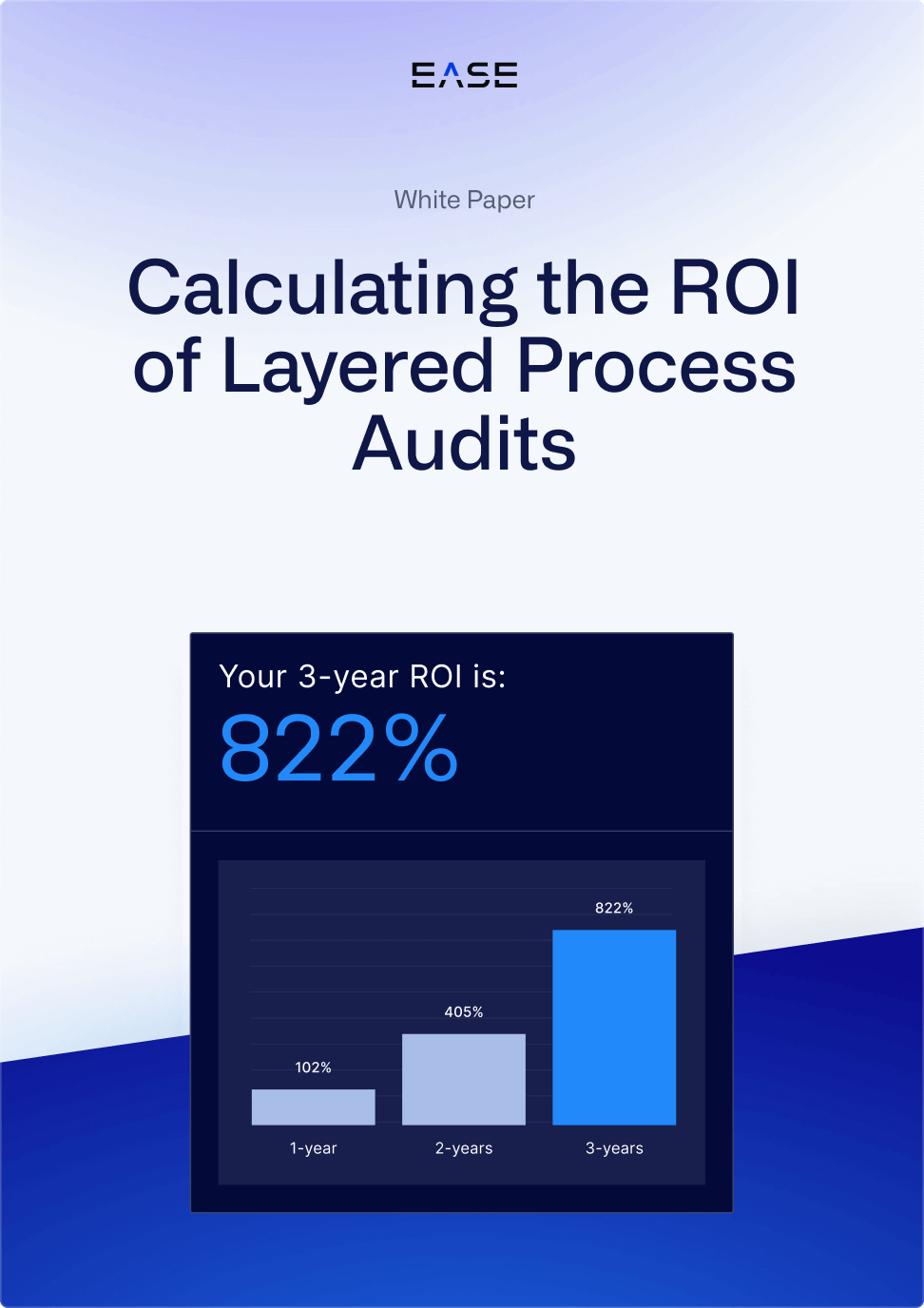5 Manufacturing Audit Trends to Watch in 2022


2021 was a turbulent year for manufacturing, and 2022 may be just as chaotic as shortages, supply chain issues and other pandemic-related challenges persist.
Today’s article looks at these issues through the lens of manufacturing audits, with 5 trends for companies to watch in the coming year.
Be ready for what’s to come in 2022 by learning how to give your LPA program a yearly check-up
Preparing for Remote Audits
When the pandemic ground global travel to a halt in 2020, remote audits became a fact of life for many manufacturers. This is true for not just regulatory audits, but surveillance audits under ISO standards and even supplier audits.
Remote audits offer many advantages over traditional audits. They take less time and require fewer staff resources, making them more cost-effective overall. Much of the efficiency gains come from submitting documentation for review ahead of time, rather than needing a team onsite to find requested documents.
The key action item here is having your documentation in order to make it easy to share. Documents such as internal audit results and related corrective actions are simpler to share in electronic format, requiring just a few clicks to compile and download reports.
Minimizing Supply Chain Risks
2022 is shaping up to be another rough year from a supply chain standpoint, with shortages expected to continue across a wide range of industries. In many cases, plants will have to expand their roster of suppliers to fill orders, introducing uncertainty into their processes in terms of quality.
Manufacturers can use plant floor audits to combat ongoing supply chain risks by:
- Conducting more frequent audits such as layered process audits (LPAs) to check critical process inputs such as materials
- Verifying error-proofing devices to ensure they correctly identify defective parts
- Using LPAs to minimize scrap and maximize profitability
Incorporating Photos into Plant Floor Checks
Audit photos are one underutilized tool that consultants at The Luminous Group are encouraging manufacturers to use more in 2022. In fact, they say the majority of audit questions—at least 70%—should incorporate a photo.
What are some different ways that you can use audit photos to make plant floor checks more effective?
- Requiring auditors to attach a photo anytime there’s an audit finding or failed question
- Providing more context on where auditors should look to answer a question, such as including a photo of a specific gage to be checked
- Clarifying what is and isn’t acceptable, for example when verifying whether a machine’s filter element is fully loaded
- Requiring a photo to be uploaded as proof the audit took place on the plant floor
Addressing Ongoing Staffing Issues
According to the National Association of Manufacturers, the manufacturing skills gap could leave more than two million jobs unfilled by the end of the decade. And while the industry has largely recovered from the pandemic-driven job losses of 2020, more than three in four manufacturers expect continued difficulties with attracting and retaining workers.
The implications for quality can’t be ignored, and plants will need to use all the tools at their disposal to avoid impacts on customers. For example, whether it’s a new hire or someone just filling in at a different work area, adding more plant floor checks can help ensure adherence to standards.
With factory orders up more than 17% over last year, according to Reuters, these checks will be critical to balancing production and quality within the context of limited staffing. Daily checks like LPAs will be especially important, allowing plants to:
- Verify key process inputs to minimize human error
- Identify areas where more training is needed
- Engage one-on-one with employees to determine whether they have the tools and support they need
Expanding Use of Cloud Software
Gartner reports that more than 85% of companies will adopt a cloud-first approach by 2025, with cloud software becoming widespread over that time. In the context of manufacturing audits, it’s clear that cloud-based software and mobile apps will become increasingly prevalent.
Mobile audit software provides several advantages over paper-based and spreadsheet-based processes, including the ability to:
- Assign audits and generate auto-notifications via email
- Trigger corrective actions from audit findings to fix systemic issues quicker
- Access real-time reports to proactively identify quality risks
- Manage LPAs, safety inspections, 5S audits, Gemba Walks, and other plant floor checks in a single platform
Pandemic-related trends such as remote audits and supply chain bottlenecks are expected to persist into 2022, and even longer for the manufacturing skills shortage. These trends are directly linked to manufacturing audits, highlighting the need for increased frequency of plant floor checks combined with the technology to make them more efficient and effective.
Mobile audit software like EASE provides a simple solution for addressing these issues, helping you complete more audits faster and gain visibility into your biggest risks.
